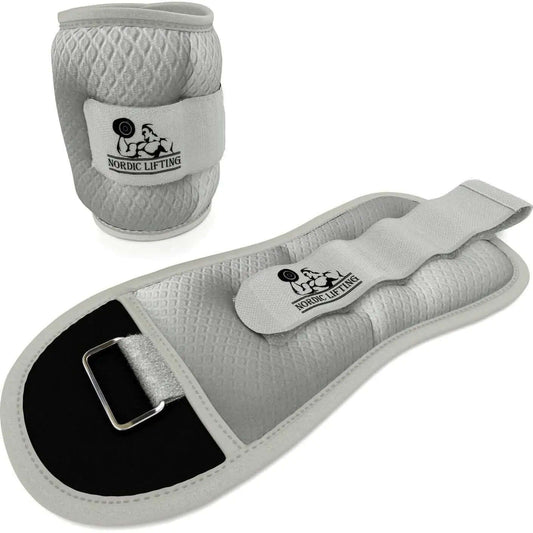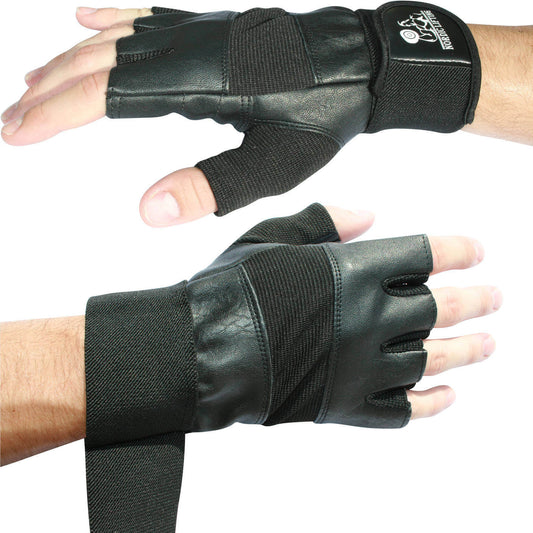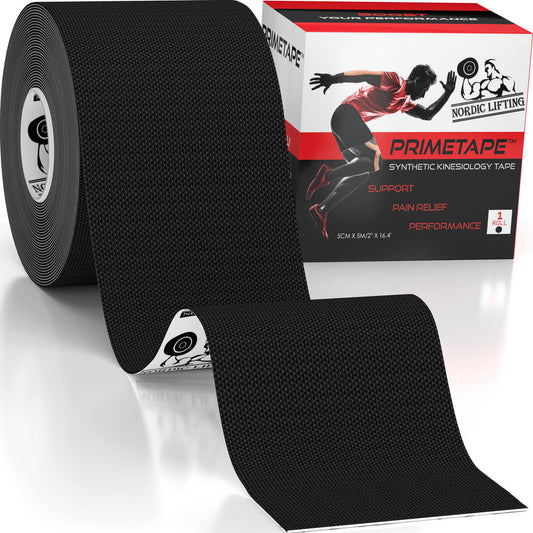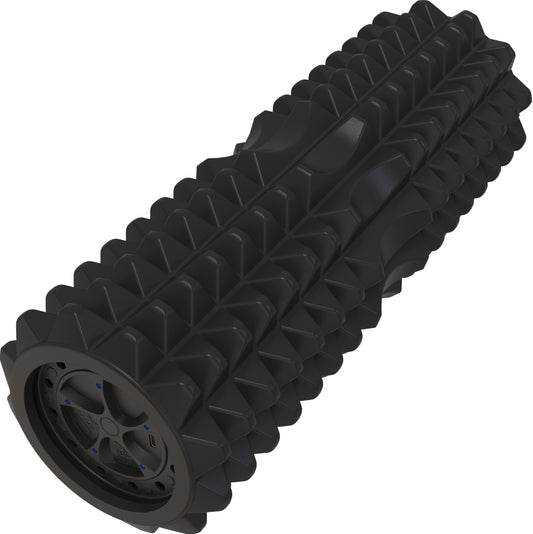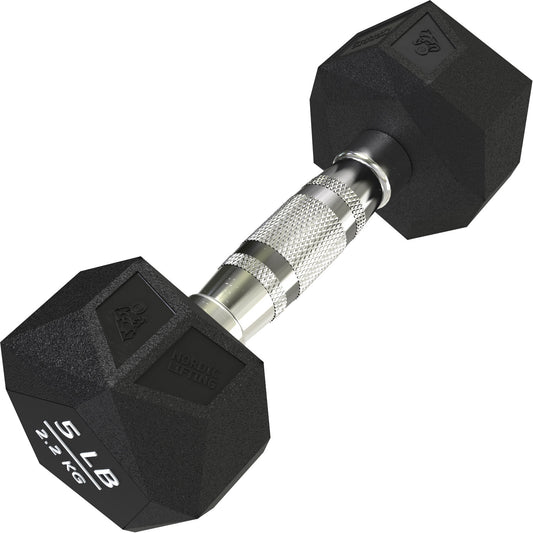Discover the power of simple kettlebell workouts and get fit easily with these proven exercises anyone can do.
Many individuals are turning to kettlebell workouts for a healthier, fitter lifestyle. These seemingly simple weights have taken the fitness world by storm—and for good reason. They offer a versatile and effective means of enhancing strength, endurance, and overall physical well-being.
In this simple guide, delve deeper into kettlebell training, which will cover everything from the fundamental exercises suitable for beginners to more advanced routines designed to challenge even the most seasoned fitness enthusiasts.

Benefits of Kettlebell Workouts
Before diving into the recommended exercises, here are the various benefits of kettlebell workouts. Understanding these advantages can motivate you as you embark on your fitness journey.
Improved Strength and Endurance
Kettlebell exercises simultaneously engage multiple muscle groups, making them a fantastic choice for building strength and endurance. Unlike traditional weightlifting, which isolates specific muscle groups, kettlebell workouts promote functional strength.
The dynamic nature of these movements requires you to stabilize your body, enhance core strength, and improve overall muscular balance. Whether you want to carry groceries effortlessly or perform daily tasks more easily, kettlebells are a great option.
Burn Calories and Promote Weight Loss
One of the most enticing aspects of kettlebell workouts is their calorie-burning potential. A 30-minute kettlebell session can burn as many as 270 calories, depending on the intensity of your workout.
This makes kettlebell training an effective choice if you're looking to shed excess pounds and boost your metabolism. Moreover, the high-intensity intervals, often a part of kettlebell workouts, contribute to the afterburn effect, where your body continues to burn calories even after you've finished your exercise.
Enhanced Functional Fitness
Functional fitness focuses on improving your ability to perform everyday activities easily and efficiently. Kettlebell exercises mimic real-life movements, making them an excellent choice for enhancing functional fitness. Whether you need to lift heavy objects, maintain proper posture, or simply move more gracefully, kettlebell workouts can help you perform these tasks more efficiently.
Helpful Article: If you want to know the other benefits, you might want to visit this article about kettlebell swings’ advantages.

Getting Started: Choosing the Right Kettlebell
For beginners, choosing the right kettlebell weight is a crucial first step. Selecting the appropriate weight ensures that you can perform exercises with proper form, reduces the risk of injury, and provides a foundation upon which to build strength. A general guideline for beginners is to start with a light enough kettlebell. A weight range of 8 to 12 kilograms (18 to 26 pounds) is typically recommended, but this can vary depending on your fitness level and individual strength.
Basic Kettlebell Workouts for Beginners
Once you've chosen the right kettlebell, it's time to get started with basic exercises. These beginner-friendly movements will help you build a strong foundation and improve your fitness.
1. Goblet Squat
The goblet squat is a fundamental kettlebell exercise that targets your lower body. To perform it:
- Stand tall with both hands on the kettlebell in front of your chest.
- Maintain a close grip on your elbows.
- Begin squatting by pushing your hips back and forcing your heels into the ground.
- Hold the position when you've gotten as low as you can safely go.
- Extend your elbows and lower the weight to just over the floor.
This exercise is an excellent way to build leg strength while working your core. Its simplicity and effectiveness make it a go-to activity for beginners.
2. Two-Handed Swing
The two-handed swing is an iconic kettlebell exercise that introduces you to the dynamic nature of kettlebell workouts. It's an incredible full-body exercise that works your legs, back, shoulders, and core. By learning how to generate power from your hips, you build strength and improve your cardiovascular endurance.
- Stand with two kettlebells in front of your feet in a wider-than-shoulder-width posture. Stand wide enough to allow the two kettlebells to swing through.
- Hinge forward and reach for each kettlebell, keeping your wrists in neutral and your palms facing each other.
- Squeezing your armpits together to engage your upper back and maintain a neutral spine can help you get your chest up and shoulders down.
- Hike the kettlebells behind you while using your forearms to protect your groin muscles.
- Once your hips are moving forward, swing the kettlebells up to about chest height.
- Your ending position should resemble an upright front plank. Repeat for the required number of reps in a continuous loop.
3. Russian Twist
The Russian twist is a seated exercise that primarily targets your oblique muscles. To perform it:
- Sit on a mat with bent knees and a kettlebell nearby.
- Hold the kettlebell at chest level.
- Lean back 45 degrees, raising your feet off the floor, and engage your core and glutes for stability.
- Keep your back straight, forming a right angle with your thighs.
- Tighten your abs and rotate your torso to touch the kettlebell to the floor on each side.
- Perform the movement mindfully, avoiding hip and knee rotation.
- Maintain proper form and do as many reps as you can safely.
This exercise helps develop core stability, essential for maintaining balance in everyday activities.
Intermediate Kettlebell Workouts
As you progress in your kettlebell journey, it's time to explore more challenging exercises. These intermediate movements are designed to push your limits and enhance strength and agility.
4. Single-Arm Kettlebell Clean and Press
The single-arm kettlebell clean and press is a complex exercise that requires coordination and strength. It involves lifting the kettlebell from the ground to overhead with one arm. This full-body movement engages your legs, back, and shoulders, making it a fantastic exercise for building strength and functional fitness.
- Stand with your feet shoulder-width apart, with a kettlebell between your feet.
- Squat down and grasp the kettlebell's handle with one hand.
- Explode upward, lifting the kettlebell to your shoulder.
- Press it overhead, arm fully extended.
- Lower it back down to your shoulder, then return to the ground.
- Repeat for the desired reps, then switch arms.
5. Kettlebell Turkish Get-Up
The Turkish get-up is a unique kettlebell exercise that challenges stability, mobility, and strength. This exercise involves a series of movements, from lying down to standing while holding the kettlebell overhead. It's a fantastic way to improve your shoulder and core strength while enhancing overall coordination.
- Lie on your back with one arm outstretched and a kettlebell in one hand.
- Bend the same-side knee and place the opposing hand at a 45-degree angle.
- Roll onto your side, then force your elbow into the ground.
- Raise your hips, tuck your leg beneath, and kneel.
- Stand up and hold the kettlebell overhead.
- To return to the earth, reverse the steps.
6. Kettlebell Deadlift
The kettlebell deadlift is a classic exercise for building lower-body strength. This movement primarily targets your hamstrings and glutes. It's an excellent choice to strengthen their posterior chain and improve their overall lower body power.
- Stand with your feet hip-width apart and a kettlebell between them.
- Grab the kettlebell with your hips and knees bent.
- Maintain a straight back and a high chest.
- Straighten your hips and knees to lift the kettlebell.
- Lower it again under control.
- Repeat for the necessary number of reps.
Advanced Kettlebell Workouts
If you've mastered the basic and intermediate exercises, you may be ready to tackle more advanced kettlebell workouts. These challenging movements demand higher strength, coordination, and technique.
7. Kettlebell Snatch
The kettlebell snatch is an explosive exercise that focuses on power and coordination. It involves lifting the kettlebell from the ground to overhead swiftly. Due to its complexity and the speed at which it's performed, it's not recommended for beginners. Proper technique is essential to avoid injury.
- Begin by placing the kettlebell between your feet on the floor.
- Hinge at the hips and slightly bend your knees to hold the kettlebell with one hand.
- Swing the kettlebell overhead by extending your hips and knees explosively.
- As it hits the top, punch your hand straight up, locking your elbow.
- Allow the kettlebell to drop and swap hands, guiding it with your hips.
- Continue in a flowing manner, alternating hands and controlling the kettlebell's route.
8. Kettlebell Windmill
The kettlebell windmill is an exercise that targets your flexibility and core strength. It involves a lateral bending movement while holding the kettlebell overhead. This exercise challenges your stability and helps improve your range of motion.
- Begin with one hand holding a kettlebell, one arm aloft, and your feet shoulder-width apart.
- Rotate your feet slightly outward, and keep your arm fully extended with the kettlebell.
- Hinge at the hips, transferring them to the opposite side of the kettlebell.
- Maintaining a straight arm, slowly glide your opposite hand down your leg.
- As you lower your torso, keep your gaze fixed on the kettlebell.
- Return to the upright position and do the opposite side.
9. Kettlebell Pistol Squat
The kettlebell pistol squat is a challenging single-leg exercise that enhances leg strength and balance. Performing this movement requires not only strength but also control and balance. It's an advanced exercise that should be approached with caution and practiced with proper form.
- Hold a kettlebell with both hands close to your chest.
- Balance on one leg while lifting the other off the ground.
- Begin lowering your body while keeping your back straight and your chest up.
- Reduce your body weight as far as possible, ideally until your thigh is parallel to the ground.
- To get back up, push through the planted foot.
- Repeat the exercise on one leg before transferring to the other.
Tips for a Safe and Effective Kettlebell Workout
As you progress through the various levels of kettlebell workouts, it's important to remember some key tips to ensure safe and effective training:
- Always Warm Up: Before your kettlebell workout, warm up your body with light cardio, dynamic stretches, and mobility exercises to prepare your muscles and joints.
- Maintain Proper Form: Correct form is crucial for kettlebell exercises. Improper form can lead to injuries. If you need more clarification about your condition, seek guidance from a certified trainer.
- Gradual Progression: When ready to increase the challenge, do so gradually. Gradually increase the weight or repetitions but take your time with the process.
- Breathe Effectively: Proper breathing is essential during kettlebell workouts. Coordinate your breath with your movements, exhaling during the exertion phase and inhaling during the relaxation phase.
- Listen to Your Body: Pay attention to how your body feels during your workouts. If you experience pain or discomfort beyond typical muscle fatigue, it's crucial to stop and seek guidance.
Sample Kettlebell Workout Routines
Here are two sample kettlebell workout routines to help you get started or add some variety to your existing training regimen.
Beginner's Routine
- Goblet Squat: 3 sets of 10 reps
- Two-Handed Swing: 3 sets of 15 reps
- Russian Twist: 2 sets of 20 twists (10 on each side)
Advanced Routine
- Kettlebell Turkish Get-Up: 3 sets of 5 reps per arm
- Kettlebell Snatch: 3 sets of 8 reps per arm
- Kettlebell Pistol Squat: 3 sets of 6 reps per leg
These routines can be adjusted based on your fitness level and goals. Be sure to maintain proper form and consult a fitness professional if you need clarification on the suitability of these routines for your specific needs.
Tracking Progress and Setting Goals
As you embark on your kettlebell journey, it's essential to have a system for tracking your progress and setting goals. Here are some tips to help you stay motivated and monitor your improvements:
- Keep a Workout Journal: Maintain a journal to record your workouts, including the weights, repetitions, and any notes on your form and how the exercise felt.
- Set Achievable Goals: Setting specific and achievable fitness goals can help keep you motivated. For example, aim to increase your weight in particular activities or aim for a certain number of repetitions.
- Periodic Assessments: Regularly assess your fitness level to gauge progress. This might include fitness tests, body measurements, or how you feel during daily activities.
- Celebrate Achievements: Recognize and celebrate your achievements, whether big or small. This positive reinforcement can help maintain enthusiasm and commitment for your fitness journey.
Incorporating Kettlebells into Your Fitness Routine
Kettlebell workouts can be a valuable addition to various fitness routines. Whether you're already engaged in a specific fitness program, such as CrossFit or traditional weightlifting, or simply looking to add variety to your workouts, kettlebells can complement your existing activities.
For CrossFit enthusiasts, kettlebell exercises can enhance your overall strength and conditioning. Many CrossFit workouts incorporate kettlebell movements, so becoming proficient in these exercises can give you an advantage.
Traditional weightlifters can benefit from kettlebell workouts by incorporating them as accessory exercises. Kettlebells provide a different challenge that can help address weak points in your traditional weightlifting movements.
For those seeking variety in their workouts, kettlebells offer a change of pace. You can incorporate them into circuit training, HIIT workouts, or standalone workouts to keep things interesting.
Key Takeaways
Incorporating kettlebell workouts into your fitness routine can be a game-changer. These versatile weights offer a plethora of exercises suitable for all fitness levels, from beginners to advanced athletes.
Begin with the basics, focus on proper form, and gradually progress to more challenging exercises. With dedication and consistency, you'll experience the numerous benefits of kettlebell workouts, from improved strength and endurance to a leaner, fitter you.
Ready to transform your fitness journey?—start now!







